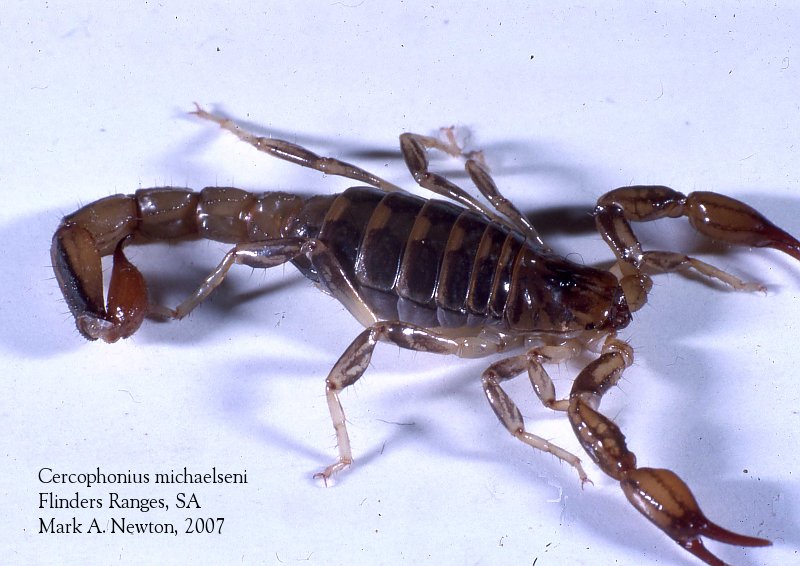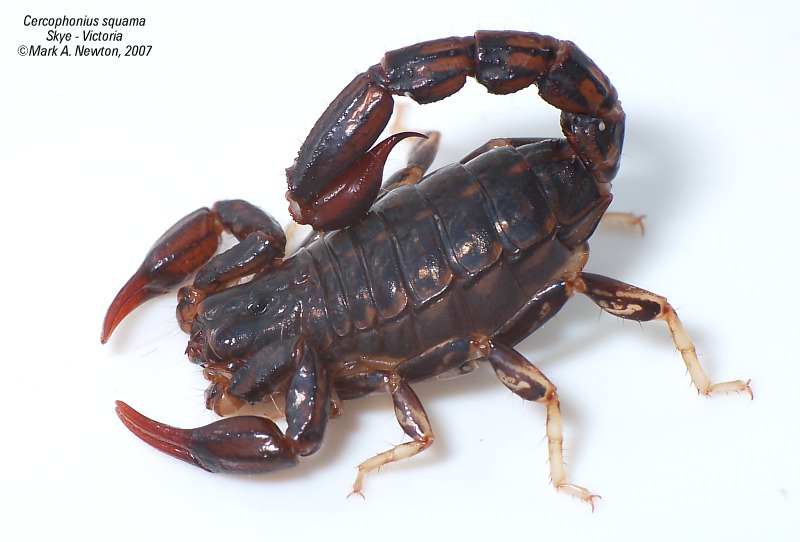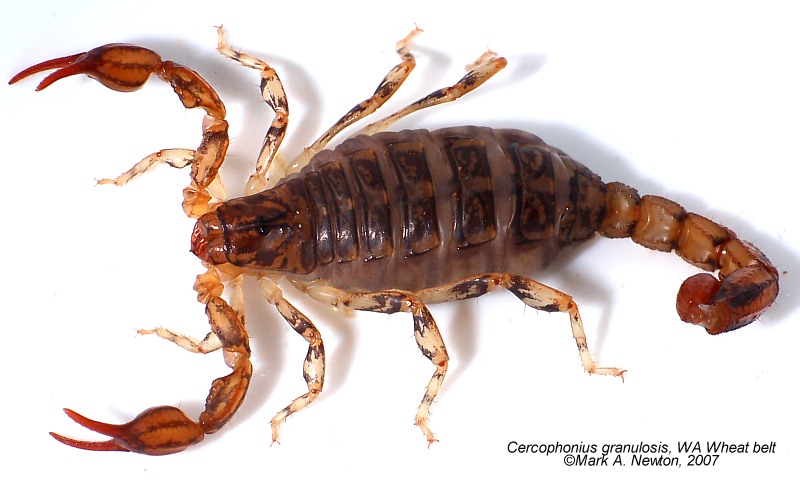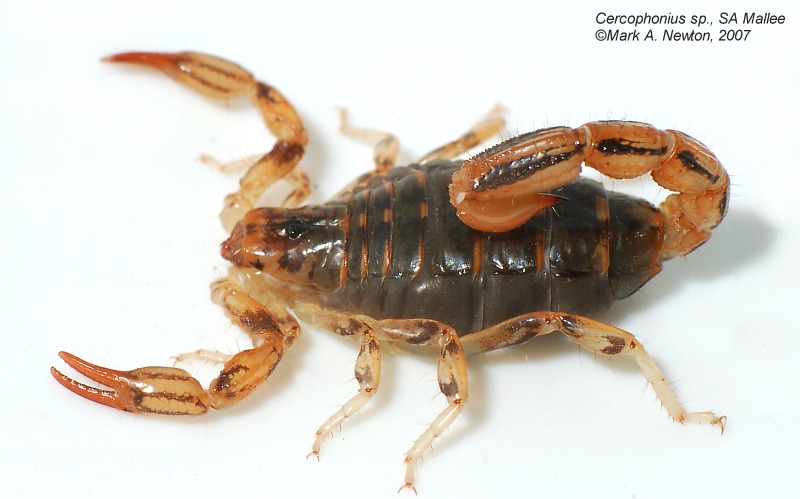|
- the Spiral Burrow Library -
*********************************************************
Above: An example of C. squama from Victoria.
*********************************************************
Above: A Western Australian species.
*********************************************************
Above: An undescribed species from the semi-arid South Australian Mallee region.
*********************************************************
Cercophonius is presently the only recognised Genera in Australia from the Bothriuridae family, with 6 species described, all looking very similar (see below for species names and general distributions). It has close relatives in South America, and is thought to have entered Australia from the southern Gondwanan element. A relatively small scorpion, although more robust than the Buthids, it attains lengths of around 40mm.
Bothriuridae
Cercophonius
* kershawi *
* michaelsoni *
* queenslandae *
* squama *
* sulcatus *
Key to the species of Cercophonius in Australia
1- Sternite VII and metasomal segments I-IV with smooth ventral surface
(ventral submedian carinae absent)
- Sternite VII and metasomal segments I-IV with ventral surface either
sparsely granular or with distinct longitudinal carinae
2- Metasoma ventrally with submedian dark stripes well developed, axial
dark stripe either vestigial or absent; all metasomal segments dorsally
with two dark spots; pectines with 15-20 teeth in males and 13-17 in
females
- Metasoma ventrally with axial dark stripe well developed, submedian
dark stripes either vestigial or absent (may be confluent with the axial
in segment I); metasoma dorsally with two dark spots in segment I and a
single dark spot in II-III; pectines with 11-15 teeth in females (males
unknown)
3- Mesosoma dorsally with a wide axial yellow stripe; metasomal segment I
with distinctly smooth to granular ventral submedian carinae
- Mesosoma without axial yellow stripe (only a single yellow spot in the
center of each tergite), or exceptionally present as a very narrow stripe;
metasomal segment I with ventral submedian carinae indistinct, often
merged in a sparsely granular area
4- Axial yellow stripe rates 14-20% of the total width of each tergite;
Metasomal segment I with conspicuously granular ventral submedian carinae;
hemispermatophore without posterodistal fold, distal lemella short and
wide
- Axial yellow stripe rates 8-12% of the total width of each tergite;
metasomal segment I with less distinct ventral submedian carinae;
hemispermatophore with posterodistal fold, distal lamella narrow and
apically curved
5- Sternite VII and metasomal segment I ventrally with weak, granular to
sometimes smooth ventral submedian carinae; all metasomal segments
dorsally with a single dark spot; hemispermatophore with S-shaped distal
lamella, posterodistal fold well developed
- Sternite VII without defined carinae, metasomal segment I ventrally
with irregular granulation, ventral submedian carinae either weakly
vestigial or indistinct, with 2-3 pairs of elevated tegumentary ridges at
the base of setae; all metasomal segments dorsally with two dark spots;
hemispermatophore with distal lamella somewhat stright and sharp,
posterodistal fold less developed
|





